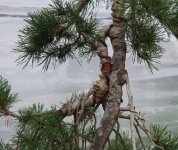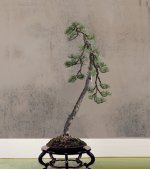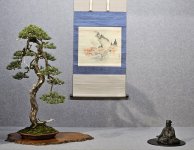Wires_Guy_wires
Imperial Masterpiece
Those soil bacteria are there already. Inoculation is useless. Improving conditions is the way to go.
Leaf sprays with QST 713 are different. You don't use that as inoculum but swamp a plant with bacteria to outcompete fungi. This won't last but it gives a temporary effect.
Part of those conditions can be man-made. While I agree that most inoculants arrive readily by air, I also believe that it really helps adding some to the soil and plant itself to kickstart them.
If the conditions have been adverse for one type of organism, it'll die and it will need time to come back (if it's even introduced within a certain timespan). Introducing it manually can speed up that process quite a bit.
Then there's nutrients, chemical or organic, and all kinds of biocides that could affect the microbiome of a pot.
Soil conditions in a bonsai pot are sometimes incomparable to potting soils or woodlands; the changes bonsai soil goes through in a single day can be too much for wildtype microbes that are accustomed to more easy going conditions.
Take our own native paddestoel met witte stippen (amanita muscaria) that is a major helper to sylvestris pines, it only fruits in fall and it's easily killed when conditions are less than ideal. If the culture dies in spring, it's going to take until at least autumn until new spores arrive with the wind. Adding spores in spring could help the fungal culture grow throughout summer.
I'm not saying everyone should get lab grown spores and I'm not denying that they arrive naturally, I'm just saying I can see the benefits of having starter cultures around. It's not entirely a waste of money.
@Mike Corazzi you just don't see the mycelium, that doesn't mean it's not there ;-) I made a very non-scientific article a couple years ago about the rhizosphere of pines (I think it was called 'a quick look in the rhizosphere of pines' or something). It should be in the resources section somewhere.
Even ethanol disinfection didn't kill all the microbes.





























